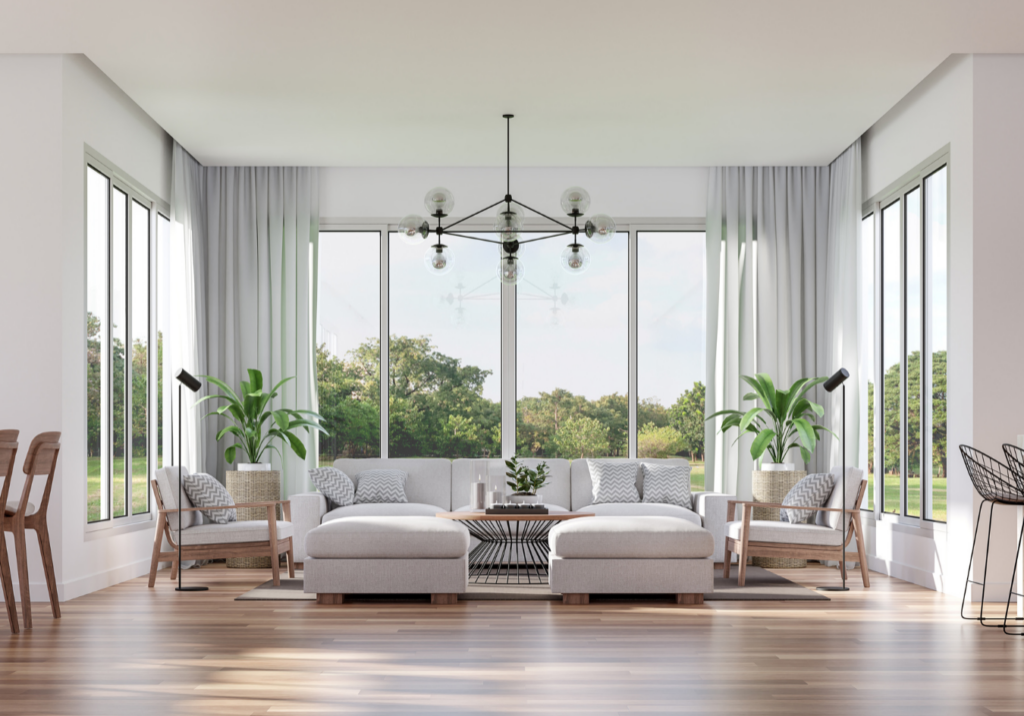Interior Design Accounting & Bookkeeping: Tips for Designers
As an interior designer, your creativity and design skills are essential for creating beautiful spaces. However, managing the financial aspects of your business is equally important for its success. Proper accounting and bookkeeping practices can help you stay organized, track your expenses, and ensure that you are making a profit. In this article, we will provide you with essential tips for interior design accounting and bookkeeping so that you can maintain good financial health and focus on what you do best – designing stunning spaces. When it comes to running an interior design business, having a clear understanding of bookkeeping meaning is crucial. By implementing effective accounting design strategies, you can streamline your financial processes and gain valuable insights into your business’s performance. Utilizing interior design accounting software can further enhance your ability to manage finances efficiently and make informed business decisions. With the right bookkeeping cheat sheet, you can simplify complex financial tasks and dedicate more time to your creative pursuits. Whether you’re a seasoned interior designer or just starting out, mastering bookkeeping for interior designers is essential for long-term success.
The Importance of Bookkeeping in Interior Design
Bookkeeping is the process of documenting and organizing financial activities in a business. It involves keeping track of all the money that comes in and goes out of your company, as well as any debts or money to be collected. For interior designers, bookkeeping is crucial due to the complex nature of the business, with multiple stages, participants, paperwork, and accounting involved. Understanding the nuances of interior design bookkeeper responsibilities is essential for maintaining financial transparency and making informed business decisions. Implementing a reliable interior design accounting software can streamline bookkeeping processes and provide accurate insights into your business’s financial health. Utilizing a bookkeeping cheat sheet pdf can further enhance your ability to manage financial data effectively and ensure compliance with industry standards.
While you may be busy with the creative aspects of your business, overlooking the financial side can lead to potential pitfalls. Interior design bookkeeping ensures that you are aware of your financial liabilities and profits. It helps you invoice clients, collect payments, manage expenses, and meet tax deadlines. Proper accounting for interior designers is essential for maintaining a sustainable business model and achieving long-term growth. By leveraging interior design accounting software, you can streamline your financial processes and gain valuable insights into your business’s performance. With the right approach to bookkeeping for interior designers, you can effectively manage recoverable expenses and optimize your business’s financial resources.
The Accounting Workflow for Interior Designers
To effectively manage your finances, it is important to understand the typical accounting workflow for interior designers. While each business may have its own unique processes, the following steps are essential for maintaining good financial records: Implementing a comprehensive interior design pricing sheet can streamline your accounting process and provide clarity on project expenses. Utilizing business management software tailored for interior designers can simplify the accounting process and ensure accurate financial reporting. By understanding the nuances of accounting for interior designers, you can effectively manage your business’s financial health and make informed decisions.
1. Invoicing Clients
Once a design proposal or item has been approved by your clients, it is crucial to create and send invoices promptly. Invoices should clearly outline the goods or services provided, along with any applicable fees or taxes. Keeping a record of all invoices issued is essential for accurate bookkeeping. Implementing an efficient interior design spreadsheet can streamline your invoicing process and ensure transparency in financial transactions. Utilizing tabs bookkeeping can further enhance your ability to track and manage invoices effectively, ensuring that you maintain a clear record of all financial transactions.
2. Recording Payments
Tracking and recording payments from clients is an important step in the bookkeeping process. This helps you keep track of outstanding invoices and ensures that you are aware of any unpaid amounts. Maintaining a system to record and reconcile payments received is crucial for accurate financial reporting. Effective time tracking is essential for managing client payments and ensuring timely invoicing. By implementing a reliable time tracking system, you can streamline your payment recording process and maintain accurate financial records.
3. Creating Purchase Orders
When invoices are paid by clients, it is important to create purchase orders immediately. Purchase orders help you keep track of the items or services that need to be ordered for a project. By maintaining a record of purchase orders, you can easily track expenses and ensure that all necessary items are procured. Utilizing quickbooks for interior designers can simplify the purchase order creation process and provide comprehensive insights into project expenses. Implementing a structured approach to managing purchase orders can help you maintain financial transparency and optimize your procurement process.
4. Recording Payments to Contractors and Suppliers
As an interior designer, you may work with contractors, suppliers, and vendors who provide goods or services for your projects. It is important to record and track payments owed to these parties. This ensures that you have a clear picture of your financial obligations and helps you manage your cash flow effectively. Leveraging accounting software for interior designers can streamline payment tracking and ensure accuracy in financial records. By effectively managing payments to suppliers and vendors, you can maintain strong business relationships and optimize your project budget.
5. Issuing Payments to Suppliers and Contractors
In addition to tracking payments owed, it is equally important to issue payments to suppliers, vendors, and contractors. Timely payments not only help maintain good relationships but also ensure that your projects progress smoothly. Recording these payments accurately is crucial for comprehensive bookkeeping. Utilizing a reliable accounting software for interior designers can streamline payment processing and ensure accuracy in financial records. By implementing a structured approach to issuing payments, you can optimize your cash flow and strengthen your business partnerships.
6. Documenting Employee Salary and Payments
If you have employees, it is important to maintain accurate records of their salary and payments. This includes tracking regular salary payments, overtime, bonuses, and any other financial transactions related to your employees. Proper documentation of employee payments helps you comply with labor laws and simplifies payroll processing. Implementing a comprehensive time tracking system can streamline employee payment recording and ensure compliance with labor regulations. By maintaining accurate records of employee payments, you can effectively manage your payroll process and promote a positive work environment.
7. Payroll Taxes and Deductions
As an employer, you play a vital role in deducting and remitting payroll taxes on behalf of your employees. This responsibility includes federal and state income taxes, social security taxes, and Medicare taxes. Maintaining accurate records of payroll taxes and deductions is crucial for meeting your tax obligations and avoiding penalties. Implementing efficient bookkeeping practices can streamline this process and provide valuable insights into your business’s financial health.
8. Project Management Systems and Reports
To maintain a meticulous tab on your financial activities, it’s beneficial to utilize project management systems. These systems can assist in tracking project expenses, monitoring project timelines, and generating comprehensive reports. By leveraging technology, you can streamline your accounting processes and gain valuable insights into your business’s financial health. Utilizing interior design accounting software tailored for small businesses can significantly simplify your bookkeeping processes.
9. Bank Statement Reconciliation
Real-time reconciliation of your bank statements is critical for accurate bookkeeping. This process involves comparing your financial records with the bank’s records to ensure alignment. Any disparities should be promptly investigated and resolved. Proper bank statement reconciliation is essential for identifying errors, unauthorized transactions, or missing payments, ultimately ensuring precise financial records.
10. Assisting Accountant or CPA
Collaborating with an accountant or certified public accountant (CPA) is indispensable for tax planning, financial reporting, and overall business advisory. As an interior designer, closely working with a financial professional can provide valuable insights and ensure compliance with tax laws and regulations. Assisting your accountant or CPA with accurate records and information simplifies the tax filing and auditing processes, making it crucial for your interior design business.
Tips for Effective Interior Design Bookkeeping
While the accounting workflow provides a framework for effective bookkeeping, here are some additional tips to help you maintain accurate financial records and manage your interior design business effectively:
1. Use Accounting Software
Investing in accounting software specifically designed for small businesses can significantly simplify your bookkeeping processes. These software solutions often include features such as invoicing, expense tracking, bank reconciliation, and financial reporting. Look for user-friendly software that integrates with other business tools and provides adequate support, ensuring efficient accounting for interior designers.
2. Organize and File Receipts
Accurately tracking your expenses is crucial for maintaining precise bookkeeping records. Cultivate a habit of organizing and filing receipts for all business-related purchases. This practice will facilitate claiming deductions, reconciling expenses, and providing evidence in case of an audit. Consider utilizing digital tools or apps to electronically store and manage receipts, enhancing your bookkeeping process.
3. Separate Business and Personal Finances
Maintaining separate bank accounts for your business and personal finances is paramount. Mixing personal and business transactions can lead to confusion and complicate bookkeeping. By segregating your finances, you can easily track business expenses, simplify tax preparation, and demonstrate the financial health of your business, a critical aspect of interior design business management.
4. Track Time and Expenses
Accurately tracking your time and expenses is crucial if you charge clients based on hourly rates or bill for reimbursable expenses. Utilize time-tracking tools or apps to record the time spent on each project. Additionally, maintain detailed records of any expenses incurred during your work. This meticulous approach ensures accurate billing and reimbursement for all expenses, a key aspect of accounting for interior designers.
5. Set Aside Funds for Taxes
As a business owner, it is imperative to set aside funds for taxes. Estimate your tax liability based on your income and expenses, and allocate a portion of your earnings to cover tax obligations. Consistently doing this will help you avoid the stress of a large tax bill at the end of the year and ensure preparedness to meet your tax obligations, a fundamental aspect of business management for interior designers.
6. Regularly Review Financial Reports
Regularly reviewing financial reports will provide you with a clear picture of your business’s financial health and allow you to make necessary adjustments. It’s important to understand the bookeeping meaning and significance of profit and loss statements, balance sheets, and cash flow statements. These reports offer valuable insights into your business’s financial performance and can guide your decision-making process. By analyzing these reports, you can identify trends, monitor expenses, and make informed financial decisions, ultimately contributing to the growth of your interior design buisness. Additionally, utilizing reliable accounting software for interior designers can streamline the process of generating these reports, saving you time and effort in the long run.
7. Seek Professional Help
If you find bookkeeping overwhelming or if you lack the necessary expertise, consider hiring a professional bookkeeper or accountant. These professionals can handle your day-to-day bookkeeping tasks, provide financial advice, and ensure compliance with tax regulations. Outsourcing your bookkeeping can free up time for you to focus on growing your interior design business and doing what you love – designing beautiful spaces. Understanding the bookeeping meaning and implementing a bookkeeping cheat sheet pdf can further simplify the process, allowing you to stay organized and focused on your core business activities.
Conclusion
By implementing the tips mentioned in this article, you can maintain accurate financial records, track expenses, and ensure that you are making a profit. Proper accounting and bookkeeping practices are fundamental for the success of your interior design business. Good bookkeeping not only helps you manage your finances effectively but also provides valuable insights into the financial health of your business. Utilizing efficient accounting software for interior designers can significantly streamline the accounting process, allowing you to focus on what you do best – creating stunning interior designs and establishing a strong foundation for your interior design firm.



